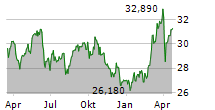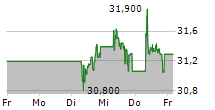
NORTHAMPTON, MA / ACCESSWIRE / December 13, 2024 / Anaerobic digestion, the process in which bacteria breaks down organic matter such as food wastes, wastewater biosolids and animal manures, is being increasingly recognized as a solution to addressing the climate-related crisis around excess food waste. In a growing number of locations around the world, and in particular, here in Canada, anaerobic digestion (AD) facilities are diverting food waste from landfills, thus lowering greenhouse gas (GHG) emissions to create green energy and valuable soil amendments for agricultural use.

However, the handling, logistics, operation and maintenance of AD facilities for waste materials are distinct and complex compared to other waste management approaches.
In this blog, we cover what AD is, how it works, challenges to avoid, and how Canadian municipalities are helping solve the climate crisis little by little.
Anaerobic Digestion in Canada
Governments across Canada, both provincial and municipal, have rolled out disposal bans to divert municipal and/or commercial food organic waste from landfills. Nova Scotia was the first province to ban organics from landfill in 1998, followed by Metro Vancouver in 2015.
In Ontario, residents generate about 3.7 million tons of food and organic waste every year, with 60% of total food waste going to landfills. In Toronto, the city is tackling the climate crisis by addressing the residential food waste issue with tremendous success. In 2014, Toronto expanded its Green Bin Program and built its second anaerobic digestion facility, called the Disco Road Organics Processing Facility.
Why is this so important as a measure to fight the climate emergency?
Organic food waste represents approximately 30% of the municipal waste stream. When sent to a landfill, it breaks down and becomes a significant source of methane. Methane, a powerful greenhouse gas, is considered to be about 80 times more harmful to the atmosphere than carbon dioxide. Thus, diverting organic materials from landfills lowers greenhouse gas (GHG) emissions and also preserves limited landfill capacity. Also, when sent to an AD facility, biomethane, a renewable gas, and valuable soil products are created. In essence, AD allows us to turn waste into resources, thus promoting the circular economy.
Types of Anaerobic Digestion
Anaerobic digestion uses bacteria to transform organic waste into energy in the absence of oxygen. This mirrors a process that already occurs in nature, such as in marshes. These microorganisms decompose muds at the bottom of marshes through AD, producing methane, carbon dioxide and other reduced compounds as byproducts. In order to be implemented on a larger scale, the process is optimized in closed tanks called digesters. The microorganisms in AD facilities digest the organic fraction of the waste and convert it into biogas (biomethane), a source of renewable energy. The residual organic matter forms what is called the digestate. The digestate is dewatered, composted and turned into fertilizer for agricultural purposes.
There are two predominant AD technologies currently being used in Canada for the processing of municipal and commercial organics: wet and dry technologies. These technologies are primarily selected depending on the feedstocks that will be received from municipal and/or commercial sources, as well as the desired outputs from the process.
Pre-Treatment Challenges
A critical component of the anaerobic digestion process is the pre-treatment of feedstocks. Municipal organic waste feedstocks often have high plastic content if the collection of food wastes is in plastic bags. The pre-treatment system removes the inert contaminants and other non-digestible elements. The remaining contaminant-free organic slurry is processed through an AD system where, over a specific time period, the organics are converted into biogas and digester solids.
There are different types of pre-treatment and choosing the right one can be a complex endeavour. The right type of pre-treatment will depend on the particular features of the feedstock, specific site conditions and requirements (e.g. future expansion, energy and/or water recovery), as well as desired outputs.
Aside from the initial capital investment, it's critical to consider both the long-term operating costs and possible income that can be generated from the plant. Selecting an inappropriate technology may result in long-term operational problems, poor or unstable chemical oxygen demand (COD) removal and high operating costs.
Treating Organic Food Wastes at Wastewater Treatment Facilities
In addition to standalone anaerobic digestion facilities, organic food wastes can also be processed at wastewater treatment facilities. As many wastewater treatment facilities already have anaerobic digesters, more organics can be added when there is underutilized capacity. This option is particularly attractive to communities seeking to leverage existing municipal infrastructure. It's also an option when neighbouring communities have organic wastes they want to divert from landfills.
Another option for processing municipal and commercial organic wastes is the use of on-farm digesters, at much lower volumes, however, given regulatory constraints. An additional possibility is the processing of an engineered bio slurry (EBS). This pre-treatment technology depackages organic wastes at transfer stations or other locales, then transports the organic slurry to a wastewater treatment facility, where it is injected into the anaerobic digesters. This process augments and/or bypasses the facility's onsite pre-treatment process. While the EBS processing approach can be beneficial in that it can reduce the operational footprint and operational issues associated with the pre-treatment of organic waste streams, it is critical that the bio slurry be properly pre-processed to avoid contamination issues that could impact the biogas production and digestate.
As the demand for sustainability and resource efficiency grows in response to the climate crisis, Canadian municipalities are investing in comprehensive organic waste processing programs. These programs aim to extract maximum value from organic waste by offsetting operational costs, generating renewable energy from biogas and producing agriculturally beneficial byproducts, all part of a burgeoning circular economy.
However, these processing programs require complex planning and extensive knowledge across many areas, including processing of municipal and commercial food and yard wastes, wastewater treatment, sludge concentration, thermal processes, product marketing and distribution, land application and energy recovery.
View additional multimedia and more ESG storytelling from Veolia North America on 3blmedia.com.
Contact Info:
Spokesperson: Veolia North America
Website: https://www.3blmedia.com/profiles/veolia-north-america
Email: info@3blmedia.com
SOURCE: Veolia North America
View the original press release on accesswire.com



